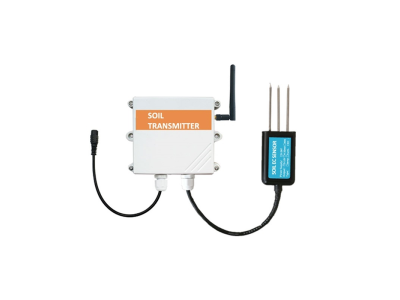Agriculture is one of the oldest and most essential human activities, providing food, fiber, and fuel for millions of people worldwide. With the global population projected to reach 9.7 billion by 2050, the demand for agricultural products will continue to grow. However, increasing productivity while minimizing environmental impact poses significant challenges for farmers. Soil management is a crucial aspect of sustainable agriculture, as soil conditions directly affect crop growth, yield, and quality. Soil sensors are emerging as a powerful tool in precision farming, providing real-time data on soil parameters that inform management decisions. In this article, we will explore how advanced soil sensor technology can enhance agriculture by improving resource efficiency, precision agriculture, and sustainability.

Resource Efficiency:
Resource efficiency is a critical component of sustainable agriculture, as optimizing resource use reduces waste and conserves natural resources. Soil sensors enable farmers to monitor soil moisture, nutrient levels, and other parameters, providing real-time data that informs irrigation, fertilizer application, and other management practices. By providing crops with the right amount of resources at the right time, farmers can reduce resource wastage, lower costs, and conserve water and energy.
Soil moisture sensors, for example, measure the amount of water present in the soil, enabling farmers to determine when and how much to irrigate, avoiding under or over-watering. Soil moisture information is crucial for efficient water management, preventing water stress in plants, and reducing water wastage. Similarly, soil nutrient sensors can measure the concentration of various nutrients in the soil, including nitrogen, phosphorus, potassium, and micronutrients. This data helps farmers assess nutrient deficiencies or excesses, enabling precise fertilizer application and minimizing nutrient losses.
Precision Agriculture:
Precision agriculture is an approach to farming that uses technology to tailor agricultural practices to specific soil conditions, plant needs, and environmental factors. Soil sensors are a key component of precision agriculture, providing real-time data on soil parameters that enable farmers to make informed decisions about irrigation, fertilization, and other management practices. By optimizing agricultural practices to specific soil conditions, farmers can reduce waste, improve crop quality and yield, and minimize environmental impacts.
Soil temperature sensors, for example, provide real-time data on soil temperature at different depths. Soil temperature affects biological activity, nutrient availability, and seed germination. Monitoring soil temperature helps farmers optimize planting schedules, manage soil-borne diseases, and improve crop growth. Similarly, soil pH sensors measure the acidity or alkalinity of the soil. Soil pH influences nutrient availability, microbial activity, and plant uptake of essential elements. Monitoring soil pH allows farmers to adjust pH levels through appropriate amendments, ensuring optimal nutrient uptake by crops.
Sustainability:
Sustainability is a critical goal of modern agriculture, as it seeks to balance economic, social, and environmental considerations. Soil sensors support sustainable and environmentally friendly farming practices by enabling precise nutrient management, irrigation scheduling, and soil cons
ervation strategies. This fosters long-term soil health, biodiversity conservation, and environmental stewardship.
Soil sensors can estimate the organic matter content in the soil, which is an important indicator of soil fertility and carbon sequestration potential. Monitoring organic matter levels helps farmers implement practices that enhance soil health, such as cover cropping, crop residue management, and organic amendments. Soil compaction sensors provide insights into soil compaction levels, which can adversely affect root growth, water infiltration, and nutrient uptake. Monitoring soil compaction helps farmers identify areas that require remediation, implement suitable tillage practices, and preserve soil structure.
Challenges and Future Directions:
Despite their potential benefits, soil sensors face several challenges that limit their widespread adoption. Cost can be a significant barrier, especially for small-scale farmers. Efforts are needed to develop cost-effective sensors without compromising accuracy and reliability. Additionally, ensuring accessibility and providing technical support to farmers in adopting soil sensor technology is crucial for its effective use.
Data interpretation is another challenge, as soil sensor data can be complex, requiring specialized knowledge for interpretation. Farmers may need assistance in understanding and integrating the data into their decision-making processes. Education, training, and user-friendly interfaces can empower farmers to effectively utilize soil sensor tech






